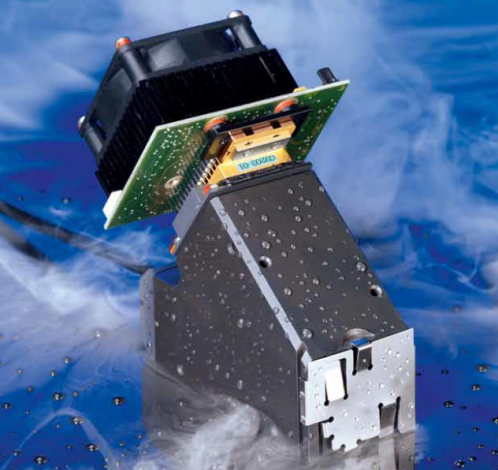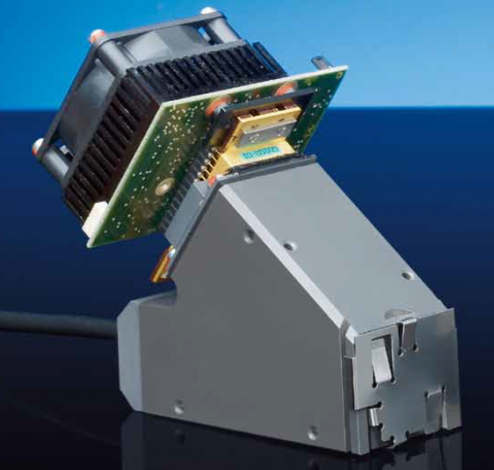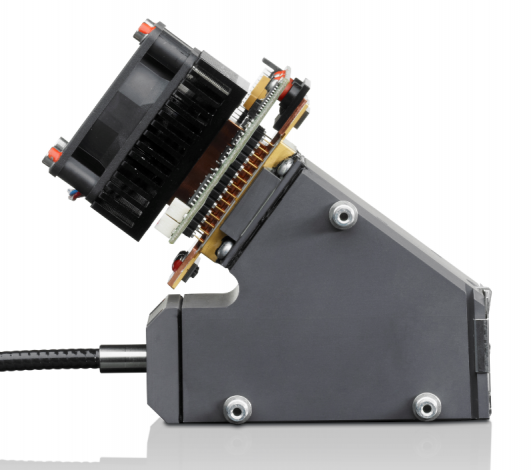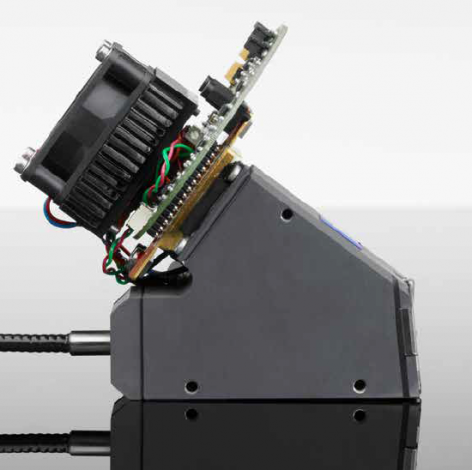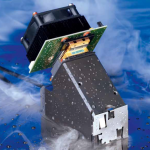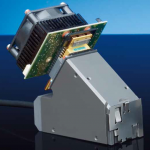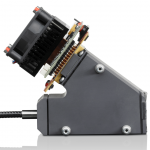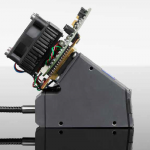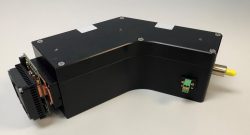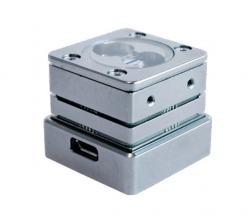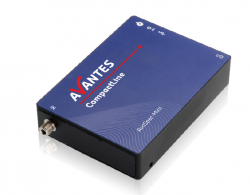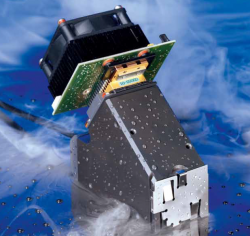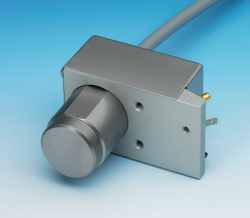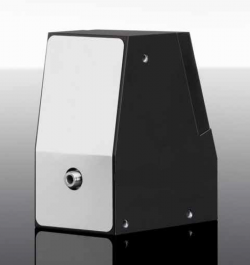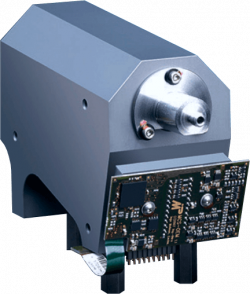PGS Optical Bench
Description
The PGS spectrometer series, configured with InGaAs sensors, is designed for SWIR spectroscopy measurements. The special combination of an aspheric collimator lens and a focusing lens enables the use of optimized plane gratings for NIR while retaining good flat-field correction of the spectral imaging.
Central body: A special aluminum alloy with an expansion coefficient of 13E–6, is used for the core housing, around which the aspheric collimator, the blazed grating and the focusing lens are mounted. The input fiber and the detector are firmly affixed to the central body, guaranteeing excellent stability.
Gratings: The plane gratings in the PGS family are either ruled or holographic, optimized for best NIR efficiency. Gratings are dimensioned in such a way that the light from a fiber can be imaged with a NA of up to 0.37.
Input fiber: The light is coupled via a Ø600μm 0.22NA fiber fitted with an internal slit with a height of 500 μm (NIR 1.7) and/or 250 μm (NIR 2.2), matched to the sensors used.
Detector: Cooled and uncooled InGaAs sensors are used for the range up to 1.7 μm in 256 and 512 pixel formats, and modules with extended InGaAs with 256 pixels are used for the range up to 2.2 μm. For the extended InGaAs arrays, an order-sorting filter is applied to the array to suppress the 2nd diffraction order.
Module Spectral range (nm)
PGS NIR 1.7: 960 to 1,690nm, in 256- and 512-pixel formats, cooled and uncooled.
PGS NIR 2.0-256: 1,340 to 2,000nm
PGS NIR 2.2-256: 1,000 to 2,150nm
Features
- High-throughput SWIR spectrometer thanks to optimized optical design, blazed gratings and TE-cooled sensors.
- Three available wavelength ranges to select from, up to 1.7µm, 2.0µm and 2.2µm.
Advantages
- Robust industrial-grade spectrometer, designed for process environment.
- Configurable with tec5USA InGaAs operating electronics for high frame rate and reliable communication protocols.
Specifications
- Permanent Input Infrasil fused silica 0.22NA fiber with SMA termination.Fiber diameter: 0.6 mm - Length 300 mm.Slit width: 80 μm.
- Filter PGS NIR 1.7 and PGS NIR 2.2: 950 nm edge filterPGS NIR 2.0: 1,350nm edge filter
- Grating PGS NIR 1.7 and 2.0: Plane grating, 484 l / mm, blazed for approx. 1.2 μmPGS NIR 2.2: Plane grating, 300 l / mm, blazed for approx. 1.4 μm
- Sensor PGS NIR 1.7: S9203 (256 pixels) / S9204 (512 pixels)PGS NIR 2.0 and 2.2: G9206 256 pixels
- Spectral range PGS NIR 1.7: 960 – 1690 nmPGS NIR 2.0: 1340 – 2000 nmPGS NIR 2.2: 1000 – 2150 nm
- Resolution PGS NIR 1.7 and 2.0: 7-8nmPGS NIR 2.2: 16nm
- Wavelength accuracy +/- 1nm
- Temperature drift < 0.012 nm / K
- Stray light ≤ 0.1 % as transmission of 10 mm of waterat 1405 nm (measured using a halogen lamp)
- Dimensions 123 x 72 x 112 mm
Improving production for your business
Developing Customer Specific OEM Product Solutions

Cutting-Edge Technology

Unwavering Customer Support

Solution Provider
PRODUCTS & SOLUTIONS
OEM Components and Turnkey Solutions to help you save costs
-
![probes other optical interfaces]()
Probes & Optical Process Interfaces
-
![Optical Fibers & Assemblies]()
Optical Fibers & Assemblies
-
![Electronics Multiplexers & Optical Fiber Switchers]()
Electronics Multiplexers & Optical Fiber Switchers
-
![OEM Light Sources]()
OEM Light Sources
-
![Operating Electronics]()
Operating Electronics
-
![Imaging Sensors]()
Imaging Sensors
-
![Diffraction Gratings]()
Diffraction Gratings
-
![Optical Benches & Spectrometer Modules]()
Optical Benches & Spectrometer Modules

tec5 Custom OEM and Turnkey Solutions
Enabling real-time process verification through rapid in-line spectroscopy
see also those other

